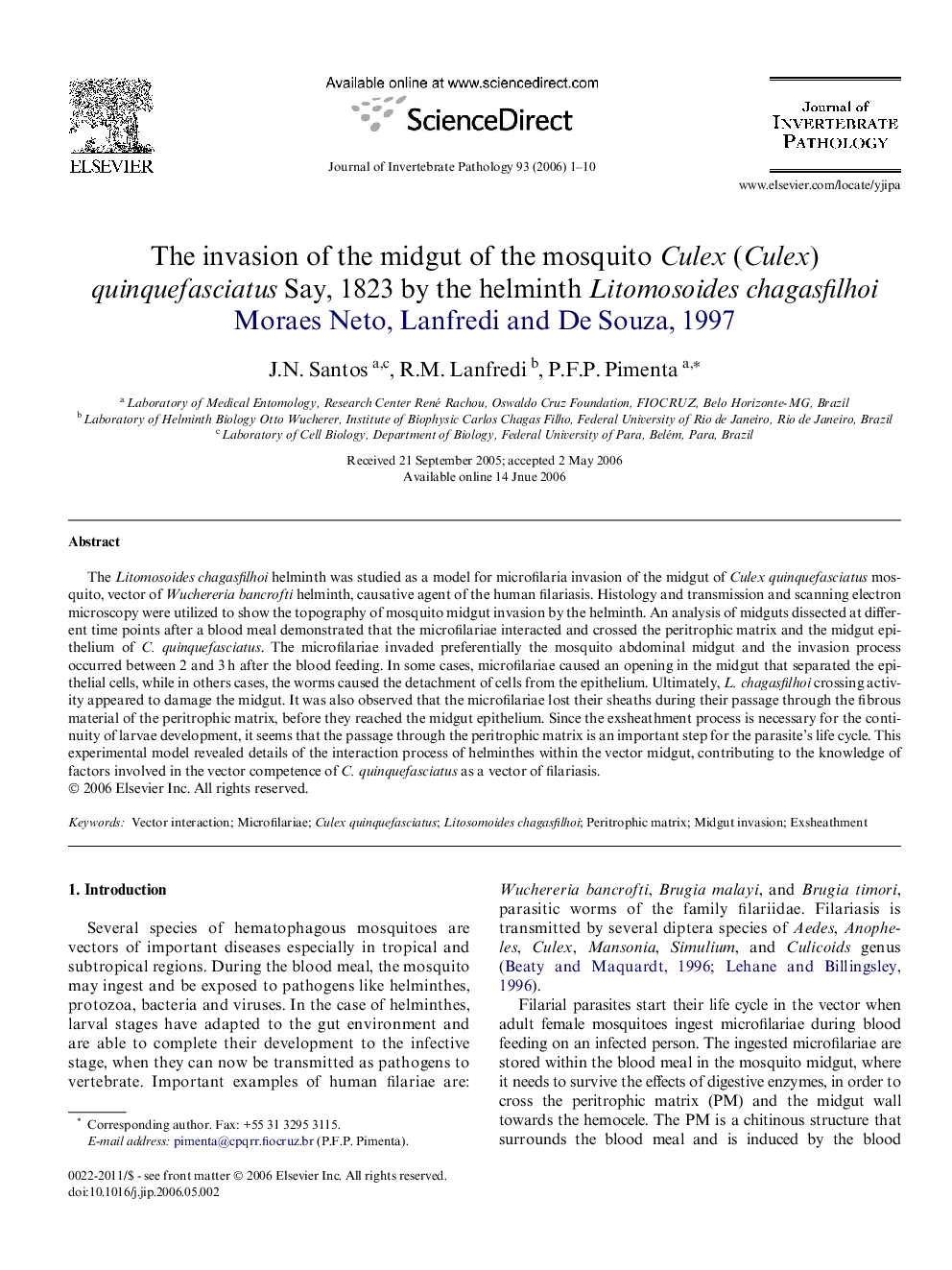| Article ID | Journal | Published Year | Pages | File Type |
|---|---|---|---|---|
| 4558713 | Journal of Invertebrate Pathology | 2006 | 10 Pages |
Abstract
The Litomosoides chagasfilhoi helminth was studied as a model for microfilaria invasion of the midgut of Culex quinquefasciatus mosquito, vector of Wuchereria bancrofti helminth, causative agent of the human filariasis. Histology and transmission and scanning electron microscopy were utilized to show the topography of mosquito midgut invasion by the helminth. An analysis of midguts dissected at different time points after a blood meal demonstrated that the microfilariae interacted and crossed the peritrophic matrix and the midgut epithelium of C. quinquefasciatus. The microfilariae invaded preferentially the mosquito abdominal midgut and the invasion process occurred between 2 and 3Â h after the blood feeding. In some cases, microfilariae caused an opening in the midgut that separated the epithelial cells, while in others cases, the worms caused the detachment of cells from the epithelium. Ultimately, L. chagasfilhoi crossing activity appeared to damage the midgut. It was also observed that the microfilariae lost their sheaths during their passage through the fibrous material of the peritrophic matrix, before they reached the midgut epithelium. Since the exsheathment process is necessary for the continuity of larvae development, it seems that the passage through the peritrophic matrix is an important step for the parasite's life cycle. This experimental model revealed details of the interaction process of helminthes within the vector midgut, contributing to the knowledge of factors involved in the vector competence of C. quinquefasciatus as a vector of filariasis.
Related Topics
Life Sciences
Agricultural and Biological Sciences
Ecology, Evolution, Behavior and Systematics
Authors
J.N. Santos, R.M. Lanfredi, P.F.P. Pimenta,
